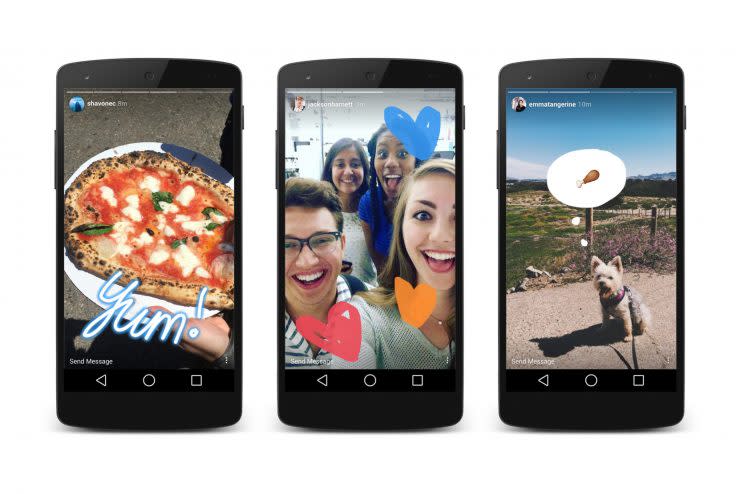3 features that social networks should never, ever borrow from one another

Instagram surprised about five people on the internet when it unveiled “Stories” Tuesday — an option to share photos and videos that, much like Snapchat’s feature of the exact same name, will disappear from your recipients’ screens in 24 hours.
This incredibly obvious borrowing from a rival fits into a long history of social networks mirroring each other. Facebook, Twitter, LinkedIn and their offspring have repeatedly copied things like hashtags, algorithmically filtered feeds and advertising-driven business models from one another. Have they succumbed to the kind of desperate mimicry we cringe-watched Jennifer Jason Leigh’s creepy character do to her roommate in the movie “Single White Female”?
Indeed, social networks will likely keep copying their rivals, à la Jennifer Jason Leigh. So we can only hope it’s not too late to tell them which features should be off-limits.
Facebook: LinkedIn’s “Who’s viewed your profile”
Although little of what you do on the 1.7-billion-user social network goes unrecorded at some level, Facebook (FB) has always ensured other users can’t see if you’ve been peeking at my profile, and you can’t see when they inspect yours. Third-party apps may promise that kind of insight, but they can’t actually deliver it.
At the buttoned-down, business-minded LinkedIn (LNKD), the opposite prevails. The professional-networking hub that Microsoft (MSFT) is buying for $26.2 billion will tell you who’s viewed your profile — and even sends emails suggesting that you sign up for a premium account to get even more insight into who’s been eyeing your page.
That kind of a feature would be a disaster on Facebook. Gathering intelligence on bosses and coworkers, basking in schadenfreude at the political leanings of relatives and, yes, stalking exes would never be the same if they could tell you’d been reading their old updates. Please don’t, Facebook.
Twitter: everybody else’s typing-indicator bubbles
Almost everybody running a messaging service has figured out that letting the user know when somebody is typing a reply will keep them staring glassy-eyed at the screen until that response appears.
Sometime, somewhere, somebody at Twitter (TWTR) must have thought that including the same kind of typing-indicator bubble icon to indicate who was typing a response to your latest tweet would make the service that much stickier. Some wiser heads must have then pointed out how horrifically distracting this would be — and how much of a drain on server resources it would be for a company now facing serious pressure from investors to start yielding Facebook-sized returns.
That’s why Twitter instead shelved that project and spent the next 10 months delivering an editing feature for tweets to stop your typos from living forever, a search function that actually finds people’s accounts when you type their names, and tools that effectively thwart abuse by trolls… oh, wait, I’ve been dreaming this whole thing.
LinkedIn: GIF, emoji and sticker replies
LinkedIn is nobody’s idea of fun — seriously, it’s the conference badge of social networks — but sometimes, it’s the only social media site where I feel like a grown-up. You must employ actual words, phrases and sentences to converse with other people, even if too many of its users wimp out by sticking with its default, vaguely Borg-like “I’d like to add you to my professional network” salutation for their LI invitations.
Meanwhile, Facebook, Twitter and pretty much every other social network have been rushing headlong into post-literate communication via such image-driven formats as emoji, animated GIFs and stickers. Other sites have taken the hint: The Washington Post invited readers to record their reactions to the Republican and then Democratic conventions with emojis, then tallied up those wordless assessments.
(Disclosure: The Post’s reader-interactivity experiment may be my fault in some tiny way, since I helped brainstorm a feature like that during a panel run by a Postie at last year’s Online News Association conference.)
LinkedIn and its impending corporate overlords must be annoyed to be left out of all this non-text fun, so I won’t be surprised if it chooses to let us respond to the updates and posts of fellow LinkedIn-ers with iconic reactions beyond today’s thumbs-up “Like” accolade.
Email Rob at rob@robpegoraro.com; follow him on Twitter at @robpegoraro.

